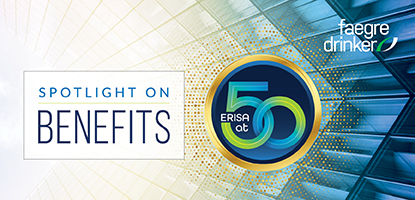The Internal Revenue Service recently granted plan sponsors additional time to amend retirement plans to reflect changes in law under: (i) Section 2203 of the Coronavirus Aid, Relief, and Economic Security Act (CARES Act); (ii) the Setting Every Community Up for Retirement Enhancement Act of 2019 (SECURE Act); and (iii) Section 104 of the Bipartisan American Miners Act of 2019 (Miners Act).
Sponsors of qualified plans and non-governmental Section 403(b) plans (including collectively bargained plans) now have until December 31, 2025, to adopt certain plan amendments required by these recent changes in law or to conform the written plan to operational changes permitted by these laws.
Special rules apply to government plans. Amendment deadlines now generally are 90 days after the close of the third regular legislative session of the legislative body with authority to amend the plan that begins after December 31, 2023. And for sponsors with pre-approved plans, the IRS states that it anticipates the changes discussed below will be covered in the next required amendments list, so that sponsors using such plan documents may be able to adopt all necessary amendments at once.
Sponsors should be aware, however, that the relief from deadlines only applies to the written plan document – not the plan in operation. The following changes are eligible for the deadline extensions, some of which are mandatory and some discretionary.
Legal Changes Eligible for Plan Amendment Deadline Extensions
The CARES Act allowed plan sponsors to waive and disregard the required minimum distribution (“RMD”) rules for calendar year 2020. Because this waiver was optional, only those plan sponsors that took advantage of the 2020 RMD waiver are affected by the plan amendment deadline extension. Plan sponsors that allowed the waiver in practice now have additional time to amend their plans to reflect this change.
The SECURE Act modified a number of rules affecting retirement plans. Notable changes included: (i) increasing the maximum automatic deferral rate for qualified automatic contribution arrangements; (ii) liberalization of rules governing nonelective contribution-based safe harbor 401(k) plans; (iii) 401(k) plan participation by long-term part-time employees; (iv) qualified birth or adoption distributions; (v) delaying the RMD required beginning date to age 72; and (vi) limiting “stretch” distribution options from defined contribution plans to certain categories of eligible designated beneficiaries after a participant’s death. Plan sponsors may be subject to some or all of these provisions of the act.
Finally, the Miners Act permitted pension plans to allow in-service distributions beginning at age 59½. If plan sponsors have, in practice, relaxed the in-service distribution rules of their pension plans in accordance with the Miners Act, but have not amended their written plan documents, the IRS has now granted additional time to memorialize those changes in writing.
The material contained in this communication is informational, general in nature and does not constitute legal advice. The material contained in this communication should not be relied upon or used without consulting a lawyer to consider your specific circumstances. This communication was published on the date specified and may not include any changes in the topics, laws, rules or regulations covered. Receipt of this communication does not establish an attorney-client relationship. In some jurisdictions, this communication may be considered attorney advertising.

